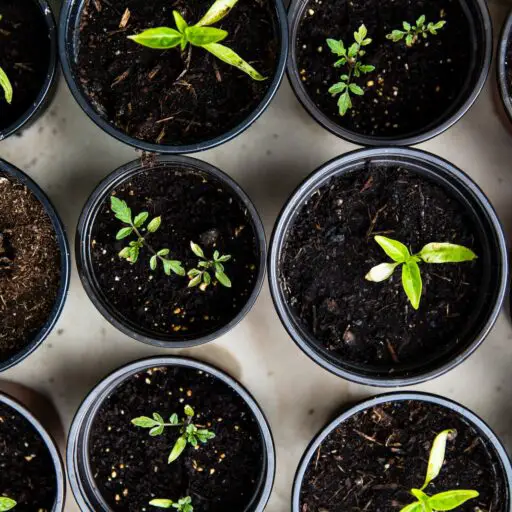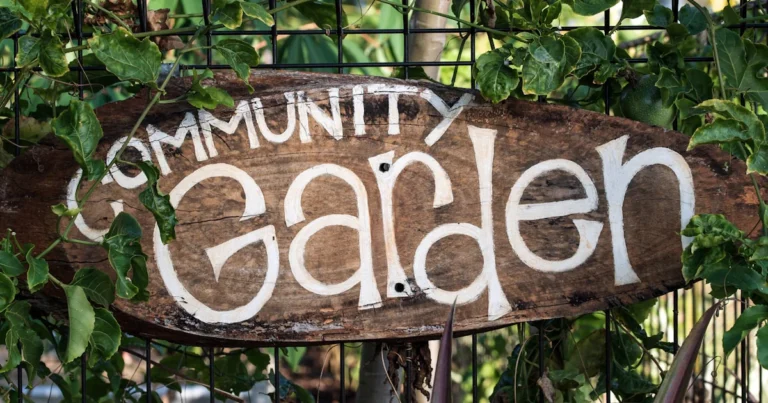Support our educational content for free when you purchase through links on our site. Learn more
Have you ever wondered why community gardens are popping up in cities and neighborhoods everywhere? Beyond just a patch of dirt and some plants, these shared green spaces are transforming communities in ways you might not expect. From boosting mental health to strengthening local food security, the advantages of a community garden go far beyond fresh veggies. Stick around, because later we’ll reveal which crops thrive best in these spaces and share insider tips on overcoming common gardening challenges — all from our seasoned team at Community Gardening™.
Fun fact: Did you know that there are over 18,000 community gardens across North America, and studies show they can increase fruit and vegetable intake by up to 35% among participants? That’s a powerful reason to grab your gloves and join the green revolution!
Key Takeaways
- Community gardens improve physical, mental, and social well-being by providing fresh produce, stress relief, and opportunities to connect.
- They boost local food security and sustainability, helping neighborhoods become more resilient and eco-friendly.
- Gardens foster education and skill-building, from gardening basics to environmental stewardship.
- Choosing the right crops and overcoming challenges like limited space or pests are key to a thriving garden.
- Ready to start? We offer expert steps and resources to help you launch your own community garden with confidence.
👉 Shop Gardening Essentials:
- Fiskars Gardening Tools: Amazon | Walmart
- Burpee Organic Seeds: Amazon | Burpee Official
- Rain Barrels for Water Conservation: Amazon | Home Depot
Table of Contents
- ⚡️ Quick Tips and Facts
- 🌱 Digging into the Roots: A Brief History of Community Gardening
- 🏡 What Exactly Is a Community Garden, Anyway?
- Why Join the Green Revolution? The Myriad Advantages of Community Gardens!
- 🍎 Harvesting Health: Nutritional & Physical Well-being
- 🤝 Cultivating Connections: Social & Community Building
- 🧠 Nourishing Minds: Mental Health & Stress Relief
- 💰 Sprouting Savings: Economic Benefits for Your Wallet
- 🌍 Greening Our World: Environmental Stewardship & Sustainability
- 📚 Growing Knowledge: Education & Skill Development
- 🛡️ Building Resilience: Food Security & Local Systems
- 🎨 Beautifying Our Blocks: Aesthetic & Property Value Boosts
- 🥕 Top Crops for Your Community Plot: What Thrives in Shared Spaces?
- 🚧 Overcoming Obstacles: Common Challenges & How to Grow Past Them
- 🚀 Ready to Get Your Hands Dirty? Starting Your Own Community Garden
- 💡 Beyond the Garden Gate: Expanding Community Impact
- Conclusion: Sowing Seeds for a Brighter Future
- Recommended Links
- FAQ
- Reference Links
Quick Tips and Facts
If you’re considering joining a community garden, you might want to know what the disadvantages are, so check out our related article about What are the Disadvantages of a Community Garden? to get a well-rounded view. Community gardens are a great way to grow your own food, meet new people, and give back to your community. Here are some quick tips and facts to get you started:
- Community gardens are outdoor spaces managed by community members for growing vegetables, fruits, and/or flowers.
- They can be installed in various spaces and communities of all sizes, considering factors like land availability, soil quality, and water access.
- Some of the best crops for moderate climates include strawberries, blueberries, radishes, kale, and snow peas, as suggested by the Plant a Seed & See What Grows Foundation.
- Community gardens provide numerous benefits, including increased vegetable and fruit intake, access to local food, community beautification, educational opportunities, and enhanced sense of community.
- According to the American Community Gardening Association (ACGA), there are an estimated 18,000 community gardens cultivated across the United States and Canada.
Digging into the Roots: A Brief History of Community Gardening
Community gardening has a rich history, dating back to the Victory Gardens of World War I and II, where people came together to grow their own food and support the war effort. Today, community gardens continue to thrive, with many cities and towns supporting these initiatives. For example, the city of Berkeley has a strong community gardening program, with numerous gardens and a Food and Nutrition Policy that supports small-scale sustainable agriculture. You can learn more about community garden policies on our Community Garden Policies page.
What Exactly Is a Community Garden, Anyway?
A community garden is a shared outdoor space where people come together to grow their own food, flowers, and other plants. It’s a place where community members can share knowledge, resources, and ideas, and work together to create a beautiful and productive green space. Community gardens can be found in urban, suburban, and rural areas, and can range in size from a small backyard garden to a large community park. If you’re interested in learning more about garden design, check out our Garden Design Ideas page.
Why Join the Green Revolution? The Myriad Advantages of Community Gardens!
Community gardens offer a wide range of benefits, from improved physical and mental health to increased community engagement and environmental sustainability. Here are just a few of the advantages of joining a community garden:
Harvesting Health: Nutritional & Physical Well-being
Community gardens provide access to fresh, healthy produce, which can improve overall nutrition and well-being. According to the Centers for Disease Control and Prevention (CDC), community gardens can also promote physical activity, such as gardening, walking, and biking.
Cultivating Connections: Social & Community Building
Community gardens offer a chance to meet new people, build relationships, and connect with nature. They can also help to strengthen community bonds and foster a sense of belonging. You can find out more about community garden events on our Community Garden Events page.
Nourishing Minds: Mental Health & Stress Relief
Gardening has been shown to have a positive impact on mental health, reducing stress, anxiety, and depression. Community gardens provide a peaceful and calming environment, perfect for relaxation and self-care. For more information on the benefits of gardening for mental health, visit the National Institute of Mental Health website.
Sprouting Savings: Economic Benefits for Your Wallet
Community gardens can help to reduce food costs, increase food security, and support local economies. By growing your own food, you can save money on groceries and support local businesses. Check out our Benefits of Community Gardens page for more information on the economic benefits of community gardens.
Greening Our World: Environmental Stewardship & Sustainability
Community gardens promote environmental sustainability, conservation, and stewardship. They can help to reduce waste, conserve water, and protect biodiversity. You can learn more about sustainable gardening practices on the Environmental Protection Agency (EPA) website.
Growing Knowledge: Education & Skill Development
Community gardens offer opportunities for education and skill development, from gardening workshops to nutrition classes. They can help to build confidence, develop new skills, and foster a sense of accomplishment. For more information on gardening education, visit the National Gardening Association website.
Building Resilience: Food Security & Local Systems
Community gardens can help to increase food security, support local food systems, and promote community resilience. By growing your own food, you can reduce your reliance on industrial agriculture and support local farmers. Check out our Edible Plants page for more information on edible plants and food security.
Beautifying Our Blocks: Aesthetic & Property Value Boosts
Community gardens can beautify neighborhoods, increase property values, and enhance community pride. They can also help to transform vacant lots and revitalize urban spaces. You can find out more about community garden design and beautification on our Garden Design Ideas page.
Top Crops for Your Community Plot: What Thrives in Shared Spaces?
When it comes to choosing the best crops for your community garden, there are many factors to consider, from climate and soil type to space and maintenance. Here are some top crops that thrive in shared spaces:
- Leafy greens, such as lettuce, kale, and spinach, are easy to grow and can be harvested in as little as 20 days.
- Herbs, such as basil, cilantro, and parsley, are perfect for adding fresh flavor to a variety of dishes.
- Tomatoes, peppers, and cucumbers are popular choices for community gardens, and can be grown using a variety of trellises and supports.
- Carrots, radishes, and beets are easy to grow and can be harvested in as little as 60 days.
- Flowers, such as marigolds, zinnias, and sunflowers, can add color and beauty to your community garden, and can also help to attract pollinators and repel pests.
Overcoming Obstacles: Common Challenges & How to Grow Past Them
Community gardens can face a variety of challenges, from limited space and poor soil to pests and diseases. Here are some common obstacles and how to overcome them:
- Limited space: Consider using container gardens, vertical gardens, or shared plots to maximize space.
- Poor soil: Test your soil and amend it as needed with compost, fertilizer, or mulch.
- Pests and diseases: Use organic pest control methods, such as neem oil or diatomaceous earth, and practice good garden hygiene to prevent the spread of disease.
- Lack of water: Consider using rain barrels or drip irrigation to conserve water and reduce waste.
Ready to Get Your Hands Dirty? Starting Your Own Community Garden
Starting a community garden can be a rewarding and challenging experience. Here are some steps to get you started:
- Find a location: Look for a sunny spot with good soil and access to water.
- Build a team: Recruit volunteers and partners to help with planning, funding, and maintenance.
- Develop a plan: Create a budget, timeline, and design for your garden.
- Secure funding: Apply for grants, donations, or sponsorships to support your garden.
- Get started: Begin building and planting your garden, and enjoy the fruits of your labor!
Beyond the Garden Gate: Expanding Community Impact
Community gardens can have a profound impact on the community, from improving health and wellness to promoting sustainability and social justice. Here are some ways to expand the impact of your community garden:
- Partner with local organizations: Collaborate with schools, non-profits, and businesses to amplify your impact.
- Host events and workshops: Offer classes, workshops, and events to educate and engage the community.
- Advocate for policy change: Work with local government and policymakers to support community gardening and urban agriculture.
- Build a community network: Connect with other community gardens and gardening organizations to share resources and best practices.
To learn more about the benefits of community gardens, check out the video below at #featured-video.
Conclusion: Sowing Seeds for a Brighter Future
Community gardens are much more than just patches of dirt where plants grow—they are vibrant hubs of health, connection, education, and environmental stewardship. From boosting your daily intake of fresh veggies to forging friendships that last a lifetime, the advantages of community gardens are as plentiful as the crops they nurture. Whether you’re a seasoned green thumb or a curious newcomer, joining or starting a community garden can be one of the most rewarding ways to invest in your well-being and your neighborhood.
Remember the question we teased earlier: Why join the green revolution? Now you know—it’s about growing together, literally and figuratively, to cultivate a healthier, happier, and more resilient community. So, grab your gloves, rally your neighbors, and get ready to dig in!
Recommended Links
👉 CHECK PRICE on:
- Gardening Tools Set by Fiskars: Amazon | Walmart | Fiskars Official Website
- Burpee Organic Vegetable Seeds: Amazon | Walmart | Burpee Official Website
- Rain Barrel Water Conservation System: Amazon | Home Depot | Rain Barrel Official
Recommended Books on Community Gardening:
- The Community Garden Book by Ben Raskin — Amazon
- All New Square Foot Gardening by Mel Bartholomew — Amazon
- Urban Gardening: How to Grow Food in the City by David Tracey — Amazon
FAQ
How do community gardens benefit the environment and local ecosystem?
Community gardens act as urban green lungs, improving air quality by absorbing carbon dioxide and releasing oxygen. They promote biodiversity by providing habitats for pollinators like bees and butterflies, which are crucial for healthy ecosystems. Gardens also help reduce urban heat islands by cooling the surrounding area through plant transpiration. Moreover, many community gardens practice composting and rainwater harvesting, reducing waste and conserving water. These sustainable practices contribute to soil health and reduce reliance on chemical fertilizers and pesticides, fostering a healthier local ecosystem overall.
What are the social benefits of participating in a community garden for adults and children?
Community gardens are social magnets! For adults, they offer a chance to connect with neighbors, build support networks, and engage in collaborative projects that foster a sense of ownership and pride. For children, gardens are outdoor classrooms where they learn about nature, nutrition, and responsibility. Intergenerational interaction in gardens encourages mentorship and cultural exchange, enriching community ties. Studies show that participation in community gardening can reduce feelings of isolation and improve overall mental well-being for all ages.
Can community gardens help to promote food security and sustainable living in urban areas?
Absolutely! Community gardens provide direct access to fresh, nutritious produce, especially in urban “food deserts” where grocery stores are scarce. By growing food locally, they reduce the carbon footprint associated with transporting produce long distances. Gardens encourage seasonal eating, organic practices, and waste reduction through composting. They also empower residents with gardening skills, promoting self-sufficiency and resilience against food supply disruptions. This makes community gardens a vital piece in the puzzle of sustainable urban living.
How can community gardens foster a sense of community and social connection among neighbors?
Community gardens create shared goals and responsibilities that bring people together. Working side-by-side to plant, weed, and harvest fosters teamwork and mutual support. Regular events like potlucks, workshops, and garden tours provide social opportunities that strengthen bonds. Gardens often become safe, welcoming spaces where diverse groups can celebrate cultural traditions and share stories, enhancing social cohesion. The pride in nurturing a thriving garden translates into a stronger, more connected neighborhood.
What are the best strategies to maintain long-term success and engagement in a community garden?
Sustaining a community garden requires strong leadership, clear communication, and inclusive decision-making. Establishing a garden committee with diverse representation helps distribute responsibilities and maintain momentum. Offering educational workshops and social events keeps members engaged and attracts newcomers. Securing funding through grants, donations, or partnerships ensures resources for tools, seeds, and maintenance. Flexibility in plot assignments and garden rules can accommodate different levels of commitment, helping to retain participants over time.
Reference Links
- American Community Gardening Association (ACGA): communitygardening.org
- Centers for Disease Control and Prevention (CDC) on Community Gardens: cdc.gov/healthyplaces
- National Gardening Association: garden.org
- Environmental Protection Agency (EPA) Sustainable Gardening: epa.gov/sustainability
- National Institute of Mental Health (NIMH): nimh.nih.gov
- Community Gardens: Lessons Learned From California Healthy Cities and Communities (PMC): pmc.ncbi.nlm.nih.gov/articles/PMC1447988/
- Berkeley Food and Nutrition Policy: cityofberkeley.info
- Burpee Seeds Official Website: burpee.com
- Fiskars Gardening Tools Official Website: fiskars.com
Ready to join the green revolution? Your community garden awaits! 🌿🌻





